Menu
Physics Lesson 22.1.5 - The Moon and Other Natural Satellites
Please provide a rating, it takes seconds and helps us to keep this resource free for all to use
Welcome to our Physics lesson on The Moon and Other Natural Satellites, this is the fifth lesson of our suite of physics lessons covering the topic of Earth and Other Celestial Bodies, you can find links to the other lessons within this tutorial and access additional physics learning resources below this lesson.
The Moon and Other Natural Satellites
Natural satellites are celestial bodies revolving around specific planets. Nowadays, there are 218 natural satellites documented so far that revolve around the 8 planets of our Solar System. Mercury and Venus have no natural satellites while Jupiter has more artificial satellites than all the other planets (79). Artificial satellites have various features; their diameters vary from a few kilometers to several thousand kilometers. They have different densities; some of them have an atmosphere and others do not; some of them have a surface covered by craters and others have a smooth surface; some of them have no geological activity while in some others intense geological activity such as volcanos and geysers are very common.
The smallest natural satellites have irregular shapes; they look like rocks detached from the surface of Earth. On the other hand, larger natural satellites have a planet-like spherical shape.
Natural satellites revolve around their corresponding planet and always display the same face to it. The only exception in this regard is Hyperon - a natural satellite of Saturn.
Moving on, we will briefly discuss the most relevant natural satellites that have been studied most frequently.
a. The Moon is the only natural satellite of Earth
The Moon is the only natural satellite of Earth. We often use the term "moon" to describe natural satellites of other planets as well. The Moon has neither atmosphere nor geological activity. The Moon makes a complete revolution around the Earth in 27.32 days and it always shows the same face to Earth.
There are two types of Moon surfaces that are visible from Earth: bright regions (continents), which in fact are surfaces covered by craters, and dark regions (seas), which in fact are flat areas.
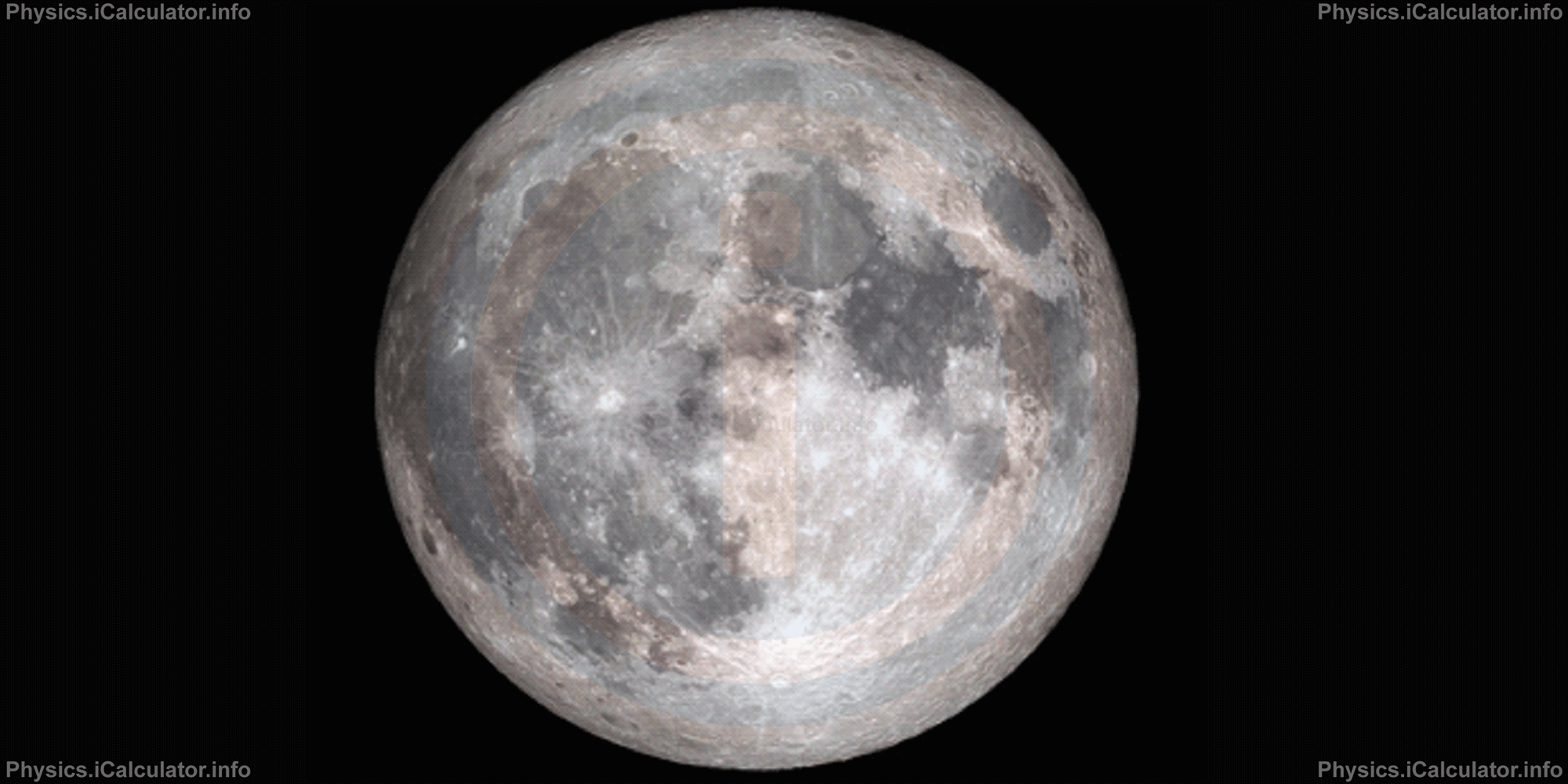
The dark region of the Moon has also been explored recently by space probes. The Moon is the only celestial body reached by humans. On July 20, 1969 humans (Neil Armstrong & Co.) landed on the Moon for the first time.
The Moon has a radius of 1737.5 km and it weighs 7.3 × 1022 kg (about 81 times lighter than Earth). The average density of the Moon is 3346 kg/m3. It is 384 000 km away from Earth.
b. Natural satellites of Mars
Mars has two natural satellites: the innermost one called Phobos (it has a radius of about 5.5 km) and the outermost one called Deimos (its radius is about 3 km). They revolve very fast around the parent planet (Mars). Phobos completes one revolution in 7h 39min while Deimos completes one revolution around Mars in 30h 19min.
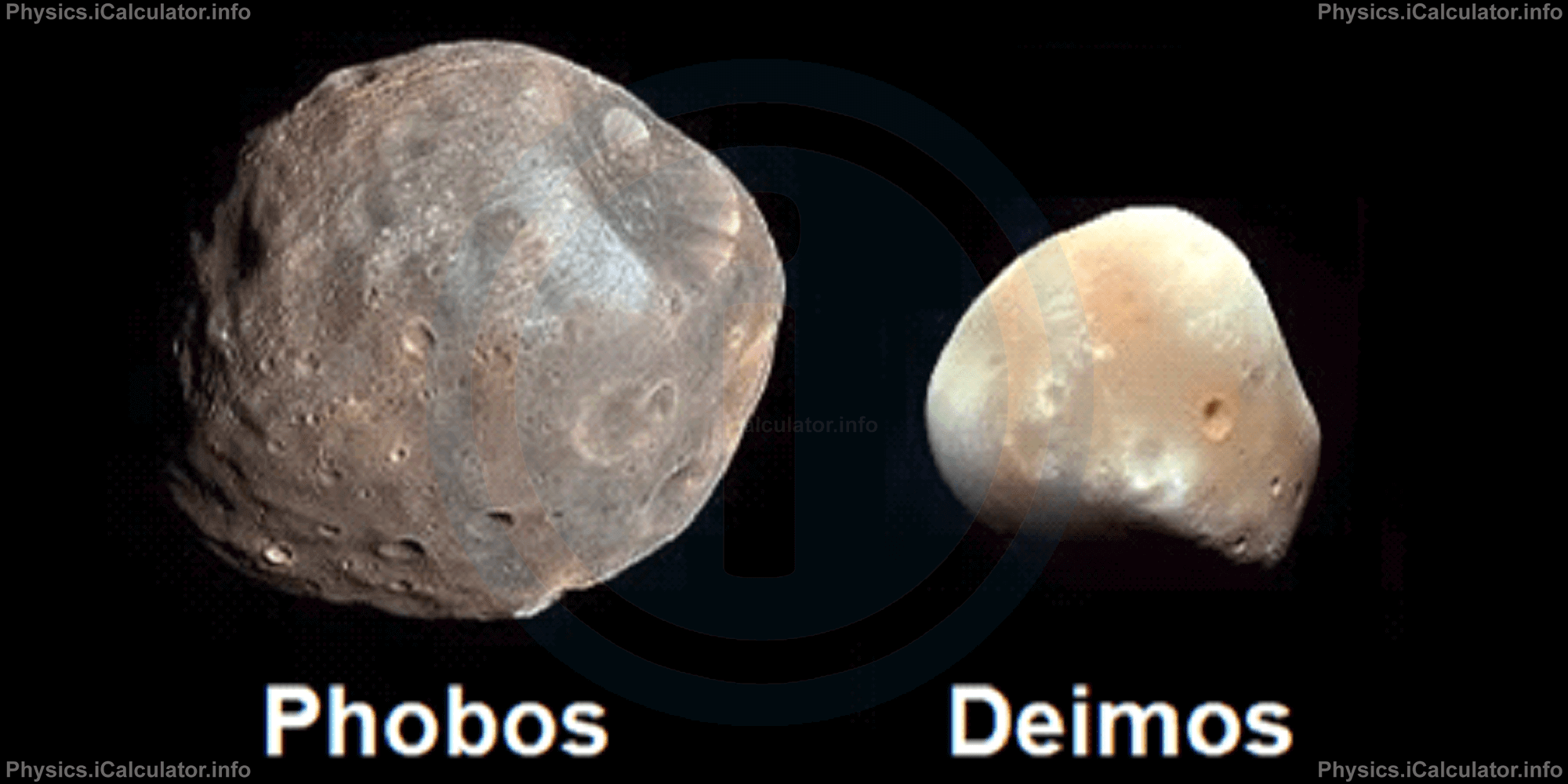
Phobos and Deimos are very small and they are irregularly-shaped. They do not have any atmosphere or geological activity and are very close to Mars (Phobos is 9400 km away from Mars while Deimos is 23 400 km away from it.
c. Natural satellites of Jupiter
As stated earlier, there are 79 known natural satellites (moons) of Jupiter. The largest of these are the four Galilean moons: Io, Europa, Ganymede and Calisto, which were independently discovered in 1610 Galileo Galilei and Simon Marius and were the first objects found to orbit a body that was neither the Earth nor the Sun.
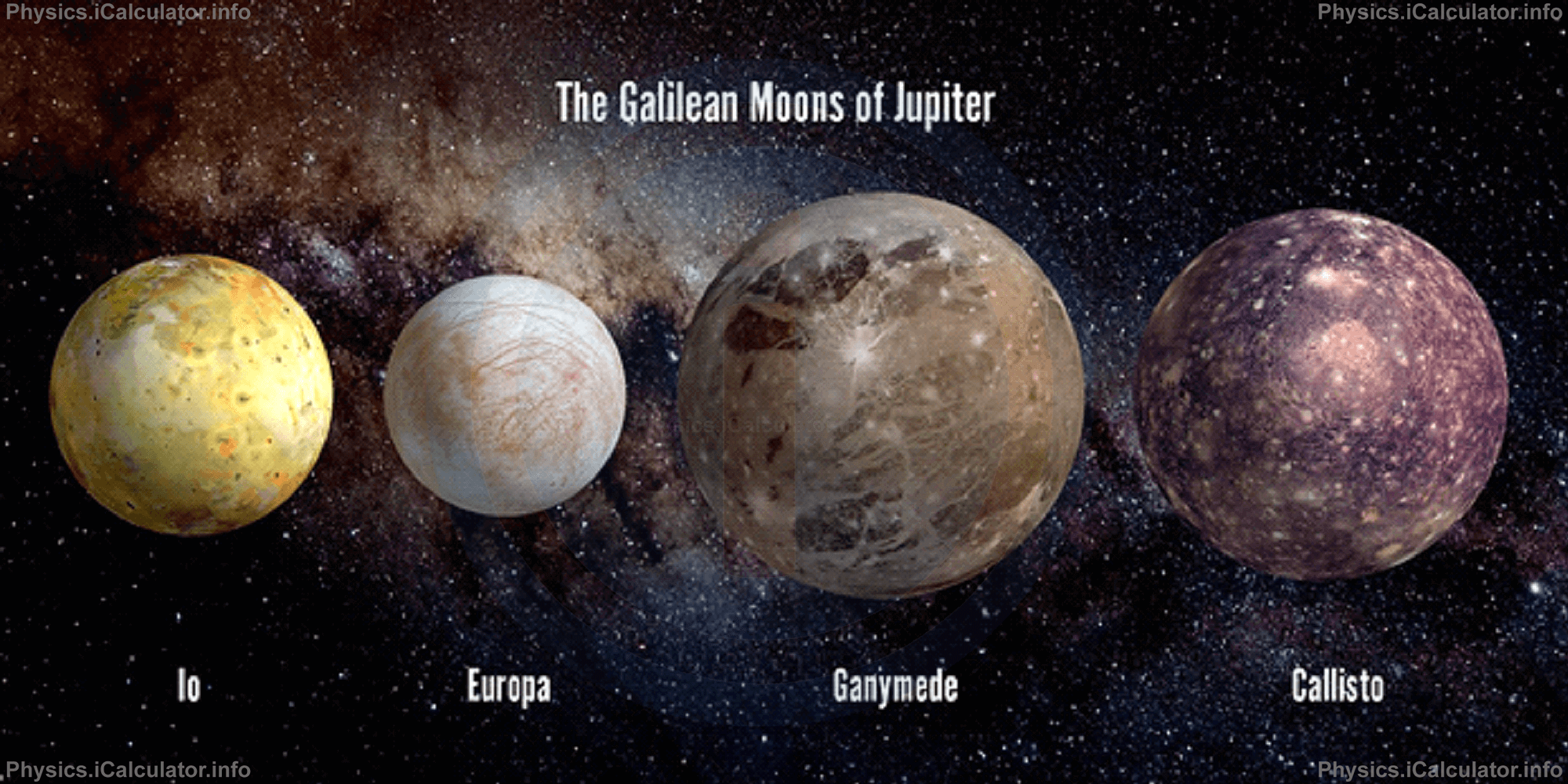
Io is very active from the geological viewpoint; it has 8 active volcanos. It has a radius of 1821 km and is 422 000 km away from Jupiter. Europe on the other hand, has a very smooth surface. Its radius is 1515 km and it is 671 000 km away from Jupiter. Ganymede is the largest moon of Jupiter; it contains a large number of ups and downs on the surface and is 1,070,000 km away from Jupiter having a radius of 2630 km. Last, Calisto has a radius of 2400 km and a distance of 1,883,000 km from Jupiter.
d. Natural satellites of Saturn
Nowadays, there are 62 natural satellites of Saturn are confirmed, most of which were discovered only recently and, at the time of writing this tutorial, are still unnamed. The largest moons of Saturn are Titan (radius = 2575 km), Rhea (radius = 764 km) and Iapetus (radius = 718 km). The corresponding distances from Saturn are: d(Titan) = 1,221,800 km, d(Rhea) = 527,100 km and d(Iapetus) = 3,560,800 km. Another interesting moon of Saturn is Hyperion. It is a small moon (radius = 133 km) but it has a special feature: Hyperion shows all faces to its parent planet (Saturn) unlike all the other natural satellites, which always show the same face to their planet. However, the motion of Hyperion is chaotic.
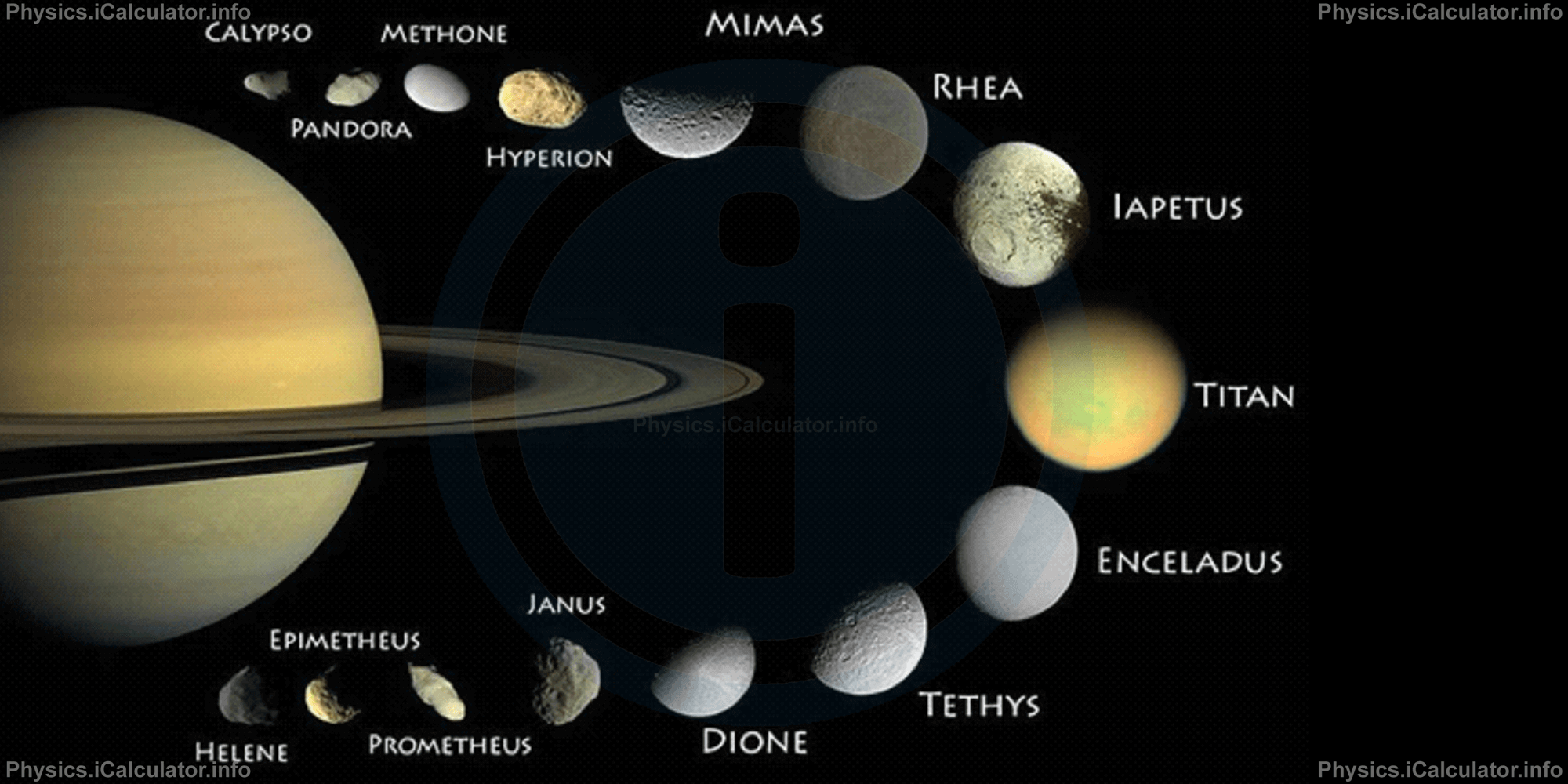
Titan is very similar to Earth. Like Earth, it has an atmosphere composed mainly by Nitrogen, an atmospheric pressure very close to that of Earth and it contains complex organic molecules that are ready to produce living organisms. The only drawback of Titan is that it has a very low temperature (-200° C). Iapetus has two distinct faces: one is black due to strikes from other satellites of Saturn and the other is completely white. Rhea's features could be divided into two regions: the first being heavily cratered (bright) terrain with craters larger than 25 miles (40 kilometers) across and a second type of area in parts of the polar and equatorial region with craters less than 25 miles (40 kilometers) across.
e. Natural satellites of Uranus
Uranus currently has 27 known satellites. Uranus's moons are divided into three groups: thirteen inner moons, five major moons, and nine irregular moons. The most known of them is Miranda (radius = 235 km). Other satellites of Uranus include Ariel (radius = 580 km), Titania (radius = 789 km), Oberon (radius = 761 km) and Umbriel (radius = 585 km). All of them are very cold and without any considerable geological activity.
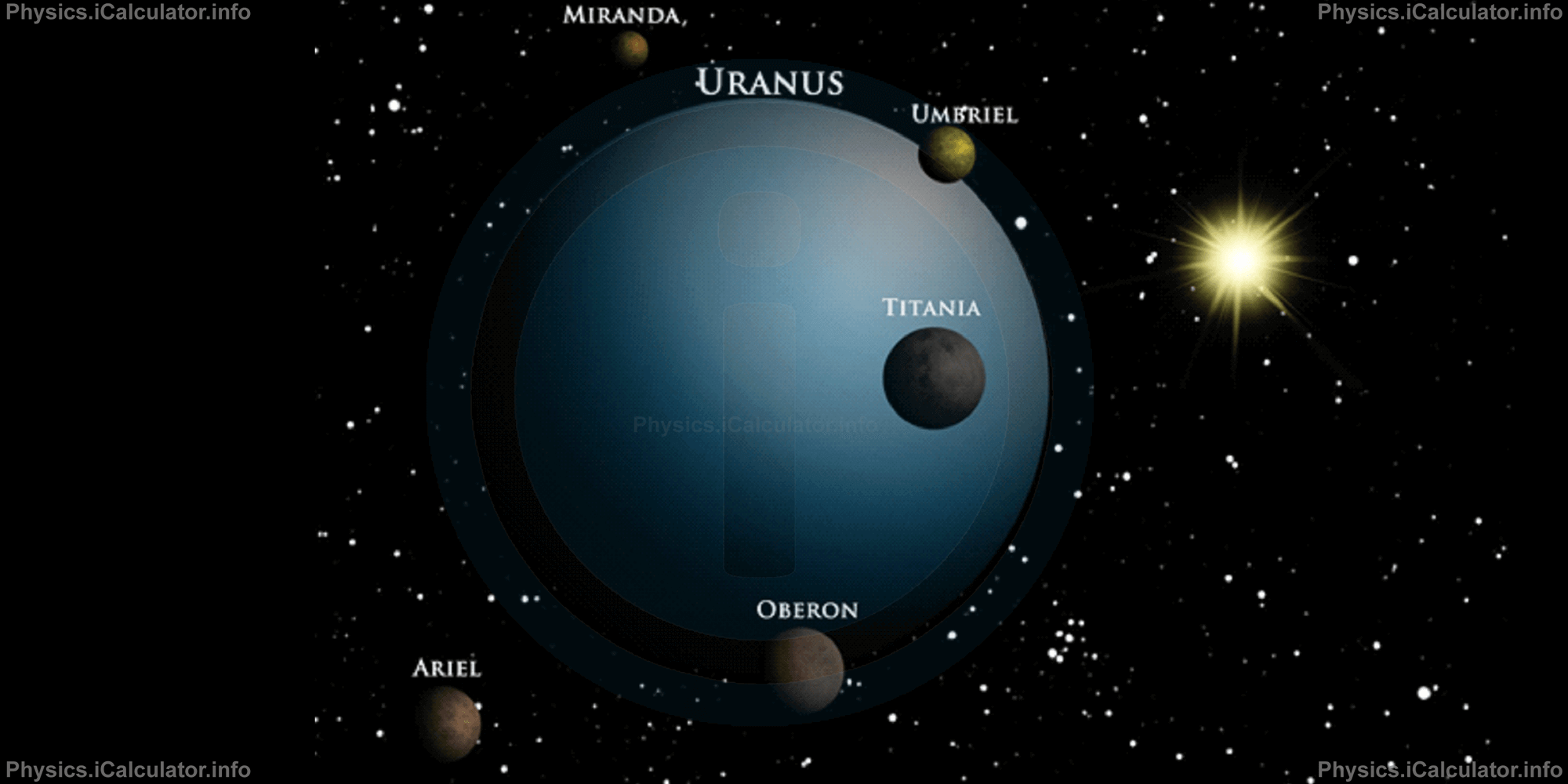
f. Natural satellites of Neptune
Neptune has 14 known natural satellites, the most famous of which is Triton (radius = 1352 km). The other satellites of Neptune have much smaller dimension (the second largest is Proteus having a radius of 210 km). All of them are cold and without any notable geological activity or favorable conditions for life.
You have reached the end of Physics lesson 22.1.5 The Moon and Other Natural Satellites. There are 6 lessons in this physics tutorial covering Earth and Other Celestial Bodies, you can access all the lessons from this tutorial below.
More Earth and Other Celestial Bodies Lessons and Learning Resources
Whats next?
Enjoy the "The Moon and Other Natural Satellites" physics lesson? People who liked the "Earth and Other Celestial Bodies lesson found the following resources useful:
- Moon Feedback. Helps other - Leave a rating for this moon (see below)
- Cosmology Physics tutorial: Earth and Other Celestial Bodies. Read the Earth and Other Celestial Bodies physics tutorial and build your physics knowledge of Cosmology
- Cosmology Revision Notes: Earth and Other Celestial Bodies. Print the notes so you can revise the key points covered in the physics tutorial for Earth and Other Celestial Bodies
- Cosmology Practice Questions: Earth and Other Celestial Bodies. Test and improve your knowledge of Earth and Other Celestial Bodies with example questins and answers
- Check your calculations for Cosmology questions with our excellent Cosmology calculators which contain full equations and calculations clearly displayed line by line. See the Cosmology Calculators by iCalculator™ below.
- Continuing learning cosmology - read our next physics tutorial: Sun and Planetary Motion
Help others Learning Physics just like you
Please provide a rating, it takes seconds and helps us to keep this resource free for all to use
We hope you found this Physics lesson "Earth and Other Celestial Bodies" useful. If you did it would be great if you could spare the time to rate this physics lesson (simply click on the number of stars that match your assessment of this physics learning aide) and/or share on social media, this helps us identify popular tutorials and calculators and expand our free learning resources to support our users around the world have free access to expand their knowledge of physics and other disciplines.